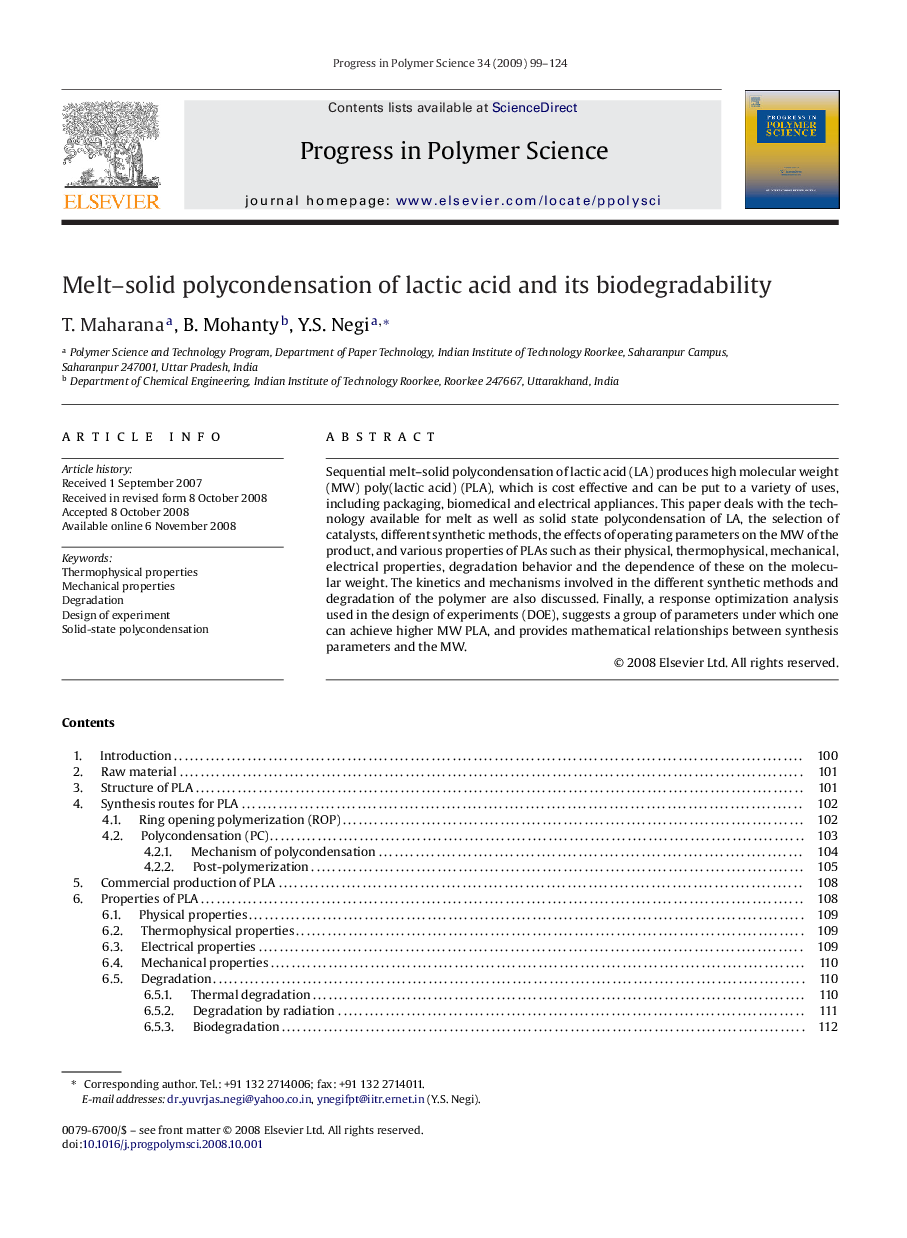| Article ID | Journal | Published Year | Pages | File Type |
|---|---|---|---|---|
| 5208941 | Progress in Polymer Science | 2009 | 26 Pages |
Sequential melt-solid polycondensation of lactic acid (LA) produces high molecular weight (MW) poly(lactic acid) (PLA), which is cost effective and can be put to a variety of uses, including packaging, biomedical and electrical appliances. This paper deals with the technology available for melt as well as solid state polycondensation of LA, the selection of catalysts, different synthetic methods, the effects of operating parameters on the MW of the product, and various properties of PLAs such as their physical, thermophysical, mechanical, electrical properties, degradation behavior and the dependence of these on the molecular weight. The kinetics and mechanisms involved in the different synthetic methods and degradation of the polymer are also discussed. Finally, a response optimization analysis used in the design of experiments (DOE), suggests a group of parameters under which one can achieve higher MW PLA, and provides mathematical relationships between synthesis parameters and the MW.
